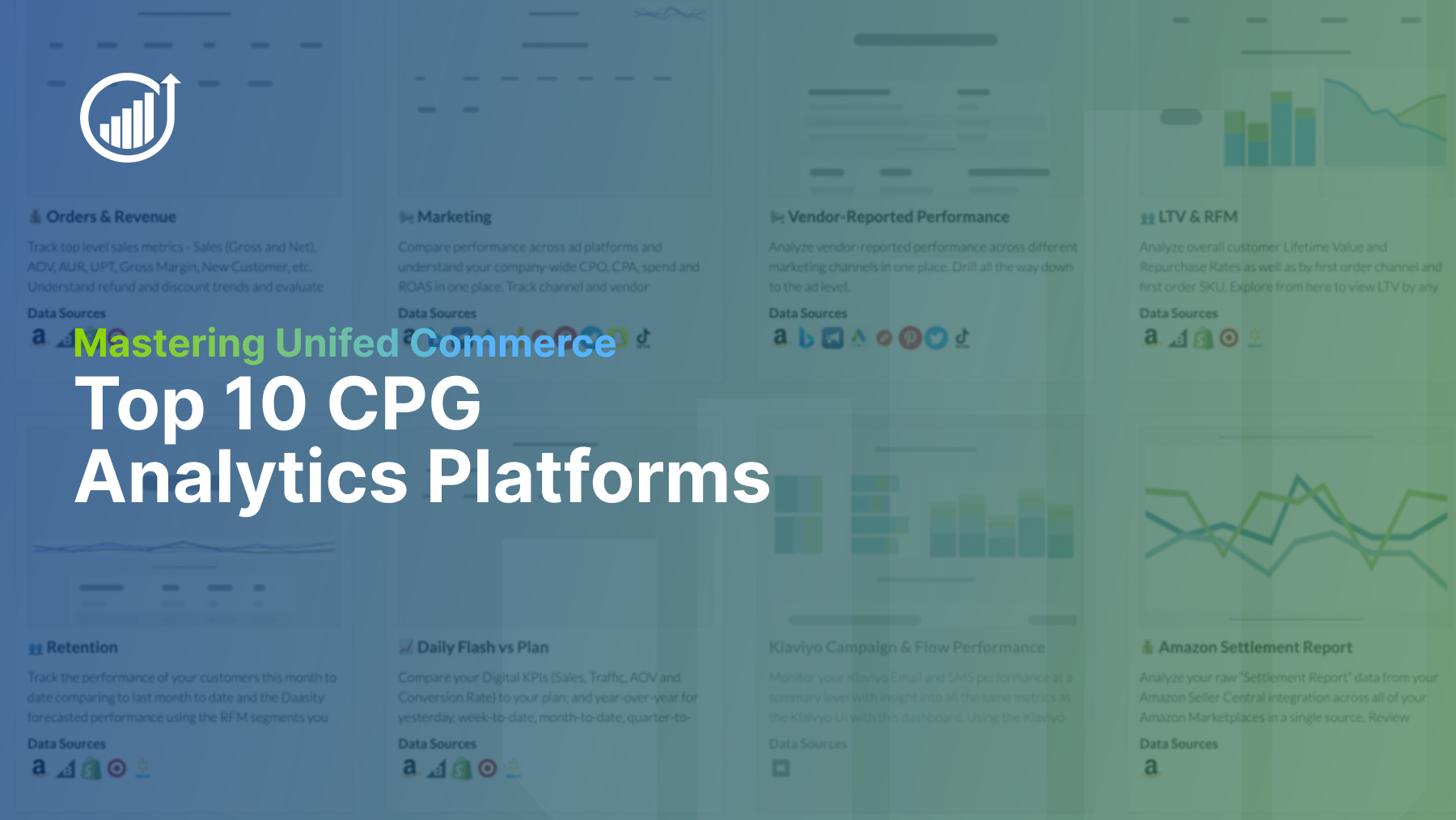What is Repurchase Rate?
Repurchase rate (also known as repeat purchase rate) is the percentage of customers who have purchased more than once in a time period.
Repurchase rate is a vital metric that every consumer brand needs to track in order to measure the success of its marketing and retention. Additionally, it answers more fundamental questions for brands:
- Do we have a good product market fit?
- How much do customers like and value our products?
First: a nuance in order to properly understand repeat purchase rate
You are likely familiar with the repeat purchase rate visualization in your Shopify analytics dashboard (called "returning customer rate" in there), which looks like this:

What we see some merchants struggle with is not quite understanding what this visualization is showing. What it shows is the percentage of customers who have placed more than 1 order from your store out of the customers who have already placed an order within the selected date range. In other words, it is a relative percentage, not an absolute percentage. It does not reflect total repeat purchase rate, only the repeat purchase rate for that specific time period.
If you change the date range, you'll likely have a completely different number. While the first screenshot is from Q1, the following visualization is from the past 30 days:

Unless you're specifically examining cohorts, you don't want your repurchase rate (and other metrics) to be based on relative analytics. Instead, they should be based on absolute analytics: out of your entire customer base, what percentage of them has made a second purchase?
Repurchase rate variability
Repurchase rate will vary based on how long a brand has been around, the brand's vertical (i.e., what is being sold), and its retention initiatives (how it's working to increase repurchase rate).
In terms of time, a brand will have higher absolute repurchase rates if they have been in business for a while: a 1 year old brand will almost certainly have lower repurchase rates than a 5 year old brand (assuming they are in the same vertical).
In terms of vertical, a brand selling a highly consumable product (toilet paper, beverages, or home goods) will have higher repurchase rates than a brand selling long-lasting products (cookware or furniture).
How to calculate repurchase rate
To calculate repurchase rate, divide the number of customers who have purchased more than once by the total number of customers over the same time period.

How to increase repurchase rate
Increasing repurchase rate is a fundamental goal of retention marketing. A great retention marketing program considers a variety of factors including:
1. Customer experience (CX): the customer's browsing, buying, post-purchase, and fulfillment experience must be, at base, strong. The eCommerce brands with the highest repurchase rates have customers who become loyal quickly, because the brands make every touchpoint special, memorable, and creative.
For example, toilet paper brand Who Gives A Crap always does an outstanding job of creating marketing materials that are enjoyable to read, even if you're not quite ready to make a purchase. In one of their holiday emails, they suggest some funny uses for their TP:

2. Customer segmentation: Although there are a ton of ways to segment your customer base, let's focus on an example of a value-based segment:
High-Value Customers: Your HVCs are your most valuable customers. They buy from you the most frequently (i.e., they have the highest repurchase rates), and they are responsible for the majority of your profits.
Focusing on them should be your highest priority as an eCommerce brand, and you should be sending them your best offers and opportunities, giving them the most love, showering the most loyalty points on them, and more. If you keep them close, they'll continue to be your customers for years.
3. Personalization: Using first-party data and zero-party data, you can provide experiences that will, if executed correctly, bring the right offer to the right customer at the right time. For example, if via a survey, you find that a customer prefers one of your products over another, and you understand their buying cadence (using a metric like time between orders), you can recommend that they buy that product at a particular time of month or year.
Visualizing repurchase rate for eCommerce brands
Tracking repurchase rate (and other eCommerce metrics, like customer lifetime value, LTV:CAC Ratio, and cost per acquisition) can be challenging, particularly without an analytics and/or BI tool.
Daasity centralizes all a brand's data and facilitates analytics via customizable and easy-to-read dashboards.
For example, using out-of-the-box visualizations, you can do easy comparisons of your repurchase rates by first order channel. In the visualization below, we've selected paid search, paid social, and paid influencer as first order channels:

However, this can show any combination of your data. Here is a comparison of email and SMS repeat purchase rates (as first-order channels):

You can also visualize and analyze repeat purchase rate by first order SKU, out-of-the-box:

For more about how Daasity can help you with your repurchase rate (and all your other metrics and data), we'd love to show you a demo.



-1.png)


